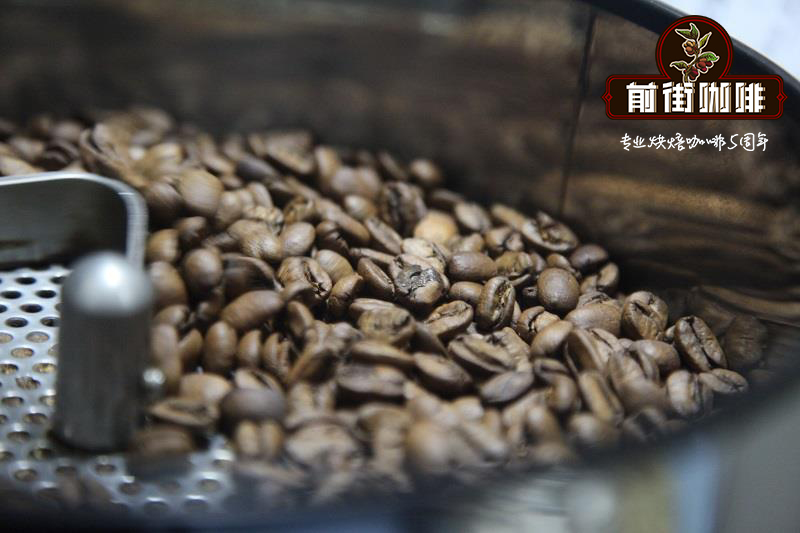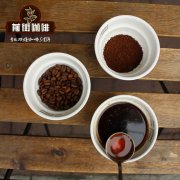How to distinguish fresh coffee beans from fresh coffee beans

Professional coffee knowledge exchange more coffee bean information please follow the coffee workshop (Wechat official account cafe_style)
Coffee, like the ingredients in life, pays great attention to freshness. When coffee is extracted into a coffee liquid and made into a drink, the freshness of the original beans greatly affects the flavor and taste of the finished product. All food will rot with the passage of time, coffee will gradually lose its flavor and aroma, there will be a process of acidification and deterioration. The main causes of coffee rancidity are oxygen, humidity and sunlight. Although in theory, as long as you avoid the attack of these three factors, you can prevent the coffee from losing its taste, but this is impossible, and it is better to finish using the coffee within a month after roasting as much as possible. Most of the coffee products in circulation have already exceeded this period, which is simply "coffee of death".
Aroma and taste
The fresher the raw beans, the more mellow, sweet and pleasant smell. Sweetness, bitterness, acidity and thickness are well coordinated, with multiple levels and rich aftertaste. But the longer the coffee is placed, it is easy to have an offensive smoke smell, and the oil also becomes mixed and unpalatable because of deterioration, resulting in a strange charm. In coffee stores of chain brands, there are often strong, bitter and unpleasant drinks, which may be overbaked by commercial beans that are widely used, or coffee beans that have been stored for a long time.
Coffee is a food that pays great attention to freshness. If you can find a professional merchant who uses coffee beans roasted within 2 weeks, you can taste clean and palatable coffee.
Visual observation during cooking
The freshness of coffee can also be distinguished when it meets the state of water. The ground coffee powder is filled in a cup or filter paper and poured with hot water. The fresher the coffee beans are, the more smoothly the carbon dioxide released from the coffee powder reacts with the water, and the upward uplift is more rapid and obvious. This phenomenon, jokingly known as "coffee bread", is often seen as a sign that coffee is breathing. However, if there is no reaction when pouring into the hot water, or if the coffee bean is sunken inside, it can be judged that the coffee bean is "dead". Seriously, it is harmful to the human body and cannot be drunk.
Date of coffee manufacture
The raw coffee beans sold in many large volume stores or supermarkets do not indicate the date of manufacture, but are replaced by other information such as the best tasting period or expiration date. To identify the freshness of coffee beans, the date of manufacture, that is, the date of baking, is the necessary information. Coffee bean products on the market usually have an one-year expiration date. If only the expiration date is indicated on the package, the date will be counted down to one year, that is, the time when the coffee beans are made. For example, the term of validity is marked as December 31, 2016, and the manufacturing date of coffee beans is December 2015. however, South Korea does not have a certain legal benchmark for the circulation period of coffee, and some operators have set the period at two years. In fact, one month after the roasting, the flavor of the coffee has declined significantly.
A method of confirming freshness with candles
This is the method of confirming the freshness of coffee introduced by a TV program. Fill the sealed jar with half of the coffee beans and put in a small lighted candle. Candles are very easy to put out in fresh coffee bean cans, while coffee beans that have been placed for too long will be in the opposite situation, and the candle flames will last longer. The carbon dioxide produced by roasting coffee beans is stored in fresh coffee beans and constantly emitted during the static process, which will cause the fire to go out. For coffee beans that are not fresh enough, most of the carbon dioxide has been released, and there is more oxygen in the tank, which makes the candle flame more difficult to extinguish.
Important Notice :
前街咖啡 FrontStreet Coffee has moved to new addredd:
FrontStreet Coffee Address: 315,Donghua East Road,GuangZhou
Tel:020 38364473
- Prev

What is a cup test? Why the cup test? Cup test technical term?
Professional coffee knowledge exchange more coffee bean information please follow the coffee workshop (Wechat official account cafe_style) what is a cup test? Why the cup test? Cup test technical term? For people in the industry, cup testing is undoubtedly a science, which requires long-term training to master it, but in fact, even lovers who have just come into contact with coffee can understand coffee better through cup testing.
- Next

Third-class principle of espresso how do you drink espresso? How do you do Italian enrichment?
Professional coffee knowledge exchange more coffee bean information please follow the coffee workshop (Wechat official account cafe_style) coffee extraction, mainly using the diffusion of coffee powder in the water, and the flushing force of the water itself, the soluble solid matter in the coffee fiber is converted into a cup of liquid coffee. A soluble solid substance that is diffused and scoured has a sequence.
Related
- Beginners will see the "Coffee pull flower" guide!
- What is the difference between ice blog purified milk and ordinary milk coffee?
- Why is the Philippines the largest producer of crops in Liberia?
- For coffee extraction, should the fine powder be retained?
- How does extracted espresso fill pressed powder? How much strength does it take to press the powder?
- How to make jasmine cold extract coffee? Is the jasmine + latte good?
- Will this little toy really make the coffee taste better? How does Lily Drip affect coffee extraction?
- Will the action of slapping the filter cup also affect coffee extraction?
- What's the difference between powder-to-water ratio and powder-to-liquid ratio?
- What is the Ethiopian local species? What does it have to do with Heirloom native species?

